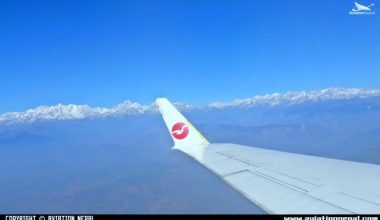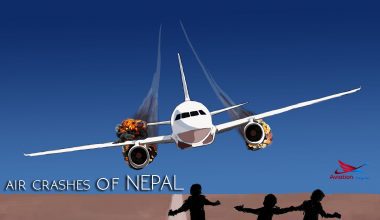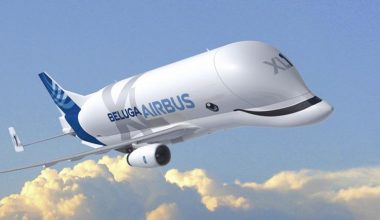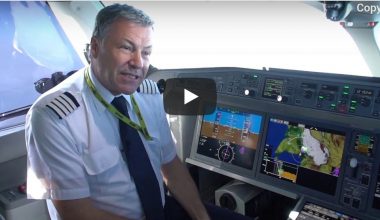Wonder, how we can use the Internet in an airplane? Some of the technology behind this miracle of airplane Wi-Fi largely resembles the gear that delivers wireless internet on the ground. There are two primary methods of getting internet at 40,000 feet above ground and traveling around 500 miles/hour: Satellite and ATG (Air-to-Ground). Both systems work fairly similar. Although they vary in bandwidth and internet speed. However, they all need a ground-based internet server, a transmitting antenna or a satellite dish, a receiver, transmitting antenna on the plane, an onboard server and a Wi-Fi router to be able to service a passenger wanting to use the laptop or mobile devices.
[the_ad id=”29220″]ATG System
As the name implies, signals from the two antennas under the belly of the airplane transmits it to the land-based cell towers. These towers are very similar to the cellular network towers we get on our 4G/LTE signal for our mobile phone. So, when onboard ATG system is activated and the aircraft flies, the connection hands off from one tower to the next just like our cell phone does when we are driving which allows users within the plane to start sending and receiving messages or emails. Unfortunately, the internet speed tops out at 3.1 megabits per second compared to our mobile phone which can provide 30 to 40 megabits per second as it is using cellular-based technology and it operates in the 3 GHz spectrum, beaming 3G signals. But, it’s enough to check our emails and send a Viber message.
Bandwidth for the newest generation system (ATG-4) bumps the potential connection from 3.1 megabits per second to 9.8 megabits per second per airplane (shared across all users) by using a directional antenna which captures the beam being sent from the cell tower.
Satellite
Unlike air-to-ground, signals from the airplane go to an orbiting satellite and then down to the ground. Mostly, satellite revolves in geostationary orbit. Because airplane moving through the stratosphere is in high speeds, the antenna must constantly maintain a connection to any given satellite this is achieved by steering antenna electronically with the help of motor and pan to catch a signal from the satellite correctly. There are 3 types of bands which indicate specific transmission frequency range.
[the_ad id=”28989″]L-band– It is as per the designation from Institute of Electrical and Electronics Engineers (“IEEE”) for the range of frequencies in the radio spectrum from 1 to 2 gigahertz (GHz). The equivalent related bands for IEEE L band is D for North Atlantic Treaty Organization (“NATO”). They are pretty slow and can provide 422 Kbps per channel per airplane.
Ku-band– This is the technology formerly used by the military, the ‘K’ stands for the German word “Kurz” meaning short, for example, shortwave frequency. And the ‘U’ stands for “Under” as it in the lower part of the NATO K-Band frequency range. So again, a ground station beams up the signal or an uplink to the satellite which reflects the signal which then can be picked up by an airplane antenna which is mounted on the top of the plane, under a radome. The system is comparable to a satellite phone. The signal is then decoded via the airplane server and distributed via the Wi-Fi router. The satellite connection used by the Ku-Band frequency is considerably faster than ATG system with data rates at 10-40 Mbps. But, it is still relatively slow if you imagine 150-190 passengers on board an aircraft and all connected to the same Wi-Fi trying to stream YouTube. It just won’t happen. However, it does have few disadvantages because of the distance the signal has to travel, satellite Wi-Fi suffers from the latency (time delay) issues that don’t affect ATG transmissions. So, while your content will load faster, overall, page elements will initially take longer to appear. In case of long-haul flights, there will likely be a handoff from one satellite to another when moving between coverage areas. From satellite viewpoints, it switches airplanes from one transponder to the next as it moves between the beams pointed at the ground. If there is one satellite transmitting to more airplanes then the internet speed also gets slower.
Ka-Band– The ‘K’ stands for the German word “Kurz” meaning short, for example, shortwave frequency. And the ‘a’ stands for “above” as it in the upper region part of the native frequency band at 20-36 GHz. It is the current fastest Wi-Fi service available. This satellite is much more powerful than the Ku-band satellite and promises to speed up to 70 Mbps to each aircraft which is the similar speed that we use in a home and allows us to stream videos as well as upload photos. Currently, there is one Ka-Band Satellite covering the United States (US) and another covering Canada and Parts of Europe
Ka-Ku Band-It is a receiver fitted on an airplane which is capable of switching between the Ka-Band and Ku-Band based on the best signal strength available and it is claimed that this combination of satellite service Wi-Fi allows the passenger to watch shows and movies on YouTube.
Ground to Orbit (GTO) – It is a hybrid technology which uses a combination of a satellite antenna on top of the plane to receive the signal and the ATG antenna under the plane to return the signal to the earth. During a speed demonstration, download speed peaked at 46.52 Mbps.
2Ku-Launched in 2015 by Gogo (in-flight internet service provider) which relies on 180 satellites in the Ku- Band giving the necessary signal strength and consistency. It uses dual Ku antennas. One antenna will receive the signal and transmit it to the aircraft, while the other will transmit the return link to the ground. It also has relatively thin 17cm high radome.
[the_ad id=”28989″]But, here is the hard truth, strapping an antenna onto the top of a plane isn’t great for aerodynamics. It’s not just expensive to install and maintain, the radome inevitably creates drag, burns extra fuel and is much heavy, so, most of the companies charge very heavily for use of internet in flight. Seeing this, many in-flight internet provider companies are trying to come up with better solutions to the aerodynamic problem such as Thinkom Thin Air Falcon Ku30330 that has antennas thickness less than 4 inches, which barely makes a hump on top of the airplane allowing more streamline airflow over the fuselage of the airplane thus reducing aerodynamic drags and weight. In the near future, these antennas will be almost invisible from the outside of the plane and people would enjoy surfing the internet at very high altitude without incurring any extra expense.
Article By-Aayush Bhattarai (Assistant Professor, Aeronautical Engineering, IOE, Pulchowk)






